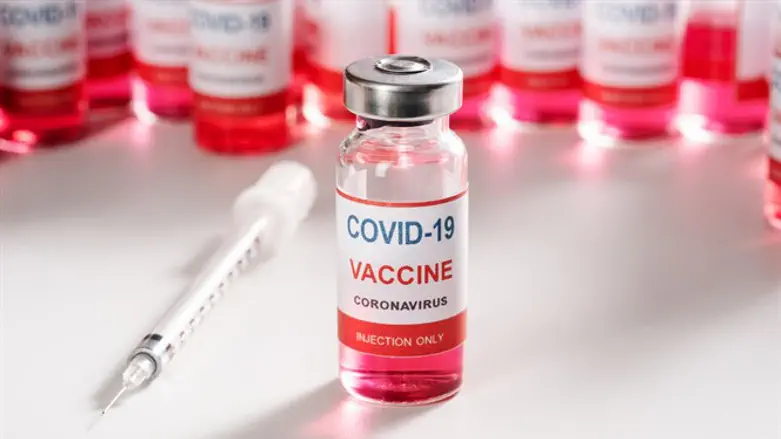
Over 240,000 members of the Clalit health fund, the country’s largest, have received their third, or booster COVID vaccine shot.
In conjunction with the Midgam polling center, Clalit conducted a survey via telephone and electronic communication, asking recipients of the booster shot to report on their experiences. Around 4,500 people were polled, all in the 60+ age group, a week after receiving the dose.
The results of the survey are to be interpreted with caution, owing to the fact that a week after the shot, many people may have still been suffering from side effects of a severity that prevented them from responding to the survey, skewing the results in favor of those who did not experience significant side effects.
In addition, the survey only targeted people who received the booster shot within the first three days it was being offered to the over-60 age group, and this group is likely not representative of the over-60 age group, and is certainly not representative of the population as a whole.
31% of those surveyed reported that they were still suffering from one or more side effects a week after receiving the booster shot. Women in general reported more side effects than men – 34% as opposed to 21%.
27% of those polled reported localized side effects at the site of the injection: 24% were still experiencing pain at the injection site a week after the shot, 6% still had swelling at the injection site a week later, and 1% of those polled had swelling in the armpit(s) a week after vaccination.
Around 15% of those polled reported systemic issues still being experienced a week after the booster shot. Of them, 9% reported fatigue, 6.1% reported feeling generally unwell, 4.3% reported headaches, 4.3% reported muscular aches, 2.1% reported joint pain, 1.4% reported fever above 38 degrees Celsius, 0.7% reported nausea, vomiting, or diarrhea, 0.1% reported suffering from rashes.
In addition, around 0.4% of respondents reported respiratory difficulties, 0.3% reported irregular heart rates, and 0.3% reported chest pain.
1% of respondents reported that they had sought medical attention for one or more of the side effects they were experiencing.
Those polled were also asked to compare their experience following the booster shot to following the second of the three doses of the Pfizer coronavirus vaccine. 88% of those polled responded that their side effects were similar or milder to those following the second dose of the vaccine. Just 10% described their experience following the booster shot as worse than the previous dose.
“This is the first broad survey of this segment of the population to be published in Israel and indeed in the entire world,” said Professor Ran Balicer, Chief Innovation Officer at the Clalit health fund as well as the fund’s director of health policy planning and a key advisor to the Israeli Health Ministry on infectious diseases.
“The results obtained demonstrate that the reported side effects experienced a week after the booster shot are either similar to or less severe than those following the second of the vaccine doses,” he added, “which confirms findings from other surveys conducted abroad.
“The coronavirus is continuing to spread in Israel, along with reporting of serious complications linked with the virus. We have no other effective way of dealing with this than the booster shot for the over-60 age group,” Balicer maintained.
“Even though we have yet to conduct a long-term research study on the efficacy and safety of the booster or third vaccine dose,” he added, “personal risk management of those in the over-60 age group is best achieved via immunization, along with cautious behavior regarding social contacts and avoiding close contact in enclosed spaces during the coming weeks.”
